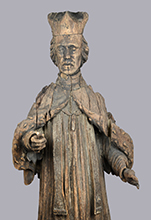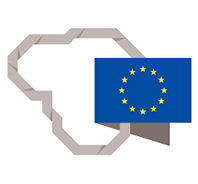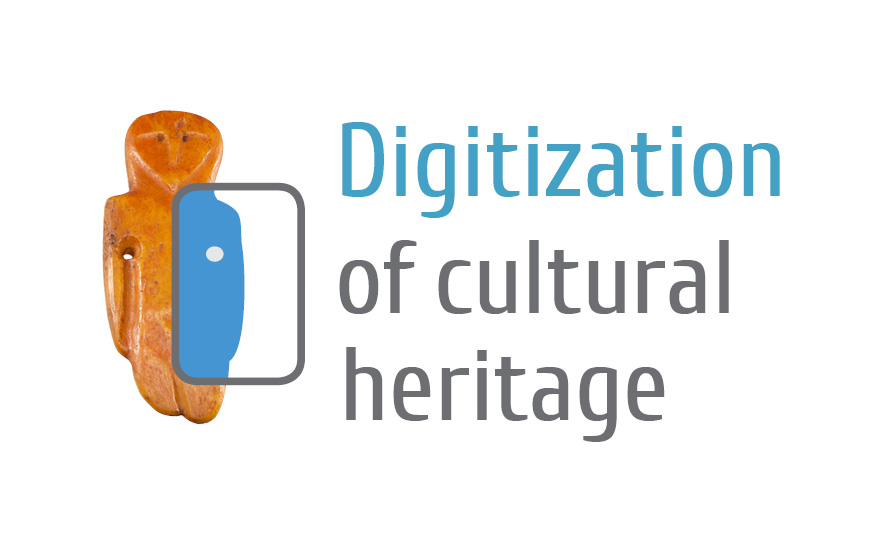St John of Nepomuk – the Patron of Trakai City
St John of Nepomuk originated from a small town called Nepomuk, situated not far from Pilzen, Bohemia, in approximately the year of 1340. He studied theology and canon law at the universities of Prague and Padua and became a priest in 1380. Later defended his doctorate in canon law and started working at the bishopric of Prague. In 1389 he was made the canon of St Vitus Cathedral in Prague, later became the vicar-general of the bishopric of Prague and was the confessor of Joanna, the wife of the king Wenceslaus IV of Bohemia (1378-1419). During the dispute regarding the church's influence on the state between the king Wenceslaus IV and Jan of Jenštejn (1350-1400), who was the Archbishop of Prague, he supported the archbishop. For opposing the king John of Nepomuk was arrested, interrogated, tortured and sentenced to death. By the order of the king, on 19 March 1393 he was tied and thrown into the river Vltava from Charles Bridge in Prague.
On 31 May 1721 he was beatified by the Pope Innocent XIII (1721-1724) and after eight years, on 19 March 1729, canonized by the Pope Benedict XIII (1724-1730). May 16 became the day of St John of Nepomuk. This saint is the patron of Czechia, priests, boatmen, raftmen, millers and bridges, as well as the protector against floods and all water-related disasters. Moreover, it is believed that he protects all the wrongly accused.
The saint is usually depicted with a priest's gown. He can also be recognized by a white surplice or a rocchetto and a biretta on his head. Other attributes include a crucifix, a palm branch, sometimes a book or a nimbus with five stars, reminiscent of the legend of the stars sparkling in Vltava River, when John of Nepomuk was thrown in the water. Another, a less common symbol, is a red tongue.
In 1702 the printing house of Vilnius Jesuits publishes a book about the life of St John of Nepomuk. Augustus II, the king of Lithuania and Poland (1709-1733) chose St John of Nepomuk as the patron of the state together with St Stanislaus and St Casimir. The cult of this saint was brought to Lithuanian-Polish Commonwealth by Jesuits in the second half of the 18th century. The Trinitarian monastery in Vilnius hosted the brotherhood of St John of Nepomuk. He quickly became one of the most popular saints.
In Trakai, at the beginning of Vytautas and Karaimų streets, there is a wayside shrine, which was mentioned in 1622 for the first time. There is a number of legends of Trakai city, related to the name of St John of Nepomuk and this wayside shrine. One legend tells about Laurynas Odinecas, the owner of Užutrakis Manor in the 18th century, who was sailing across Lake Galvė, when suddenly a storm broke out and he started sinking. The landowner started praying for St John of Nepomuk, asking for his help and the storm calmed down. Thankful for his life, Laurynas Odinecas ordered a statue for the saint and put it into the wayside shrine. The wayside shrine with St John of Nepomuk stood in the market square up until the uprising of 1863. After the defeat of the uprising, the tsarist government ordered to bring the saint down. Although a large sum of money was offered, none of the locals agreed to do it. Finally somebody, who agreed to take up that job, was found. He put up a ladder and took his axe. Suddenly the ladder broke and the wrongdoer fell down and broke his leg. Then the head of Trakai police called for Cossacks, who came and demolished the statue of the saint. The statue of St John of Nepomuk, recreated by the sculptor Stanislovas Hornas-Poplavskis (1902-1997), was returned to its original place only in 1935. The saint stood there up until 1960, when zealous atheists took him down and threw him into the waters of Lake Luoka. Museum workers took the statue out of the lake and stored it in the funds of the museum until 1990. During the same year the statue was restored at Pranas Gudynas Centre for Restoration and returned to Trakai, to its original place.
In 2015 Trakai celebrates the 25th anniversary since the first town festival dedicated to St John of Nepomuk.






